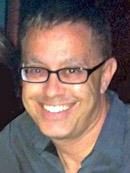
THE BRIDGE TO COLLEGE
Managing Expectations in College Admissions

Success in college admissions is not easy. With its multiple essays and recommendation letters and interviews, the American holistic system involves a significant amount of subjective evaluation. For our best universities, excellent grades and test scores do not guarantee admission.
To achieve the best college options, parents and students should manage their expectations, of both the application process and the potential results.
Although applications are not inherently difficult, the admissions process is challenging. There is a lot of work, usually with little guidance. There are a lot of pieces, most with high criticality. Students are pulled between school work and college essays. You will be faced with deadlines and turmoil. Anxiety and high emotions are inevitable. You will become tired, and your work will be inconsistent.
Obviously, you should do some planning and start the admissions process early. Intelligent planning acknowledges that nobody is perfect and nobody is tireless. In fact, filing more applications usually results in poor results because the student work is inferior. Remember, more is not better. Better is better.
When developing a list of prospective schools, recognize that top schools usually require more essays, more testing, and more work. Also – and this is commonly forgotten – the schools with the lowest acceptance rates are the hardest schools to achieve! Even with an outstanding resume, students need to do their best work on their applications. This is not like applying for credit cards.
Be smart. Plan for quality, not quantity. Limit the number of “reach” schools to about four. More than that begs for disaster. Statistically, an “Ivy League or Bust” strategy usually ends in bust.
Your college list should be an intelligent blend of reach, target and safety schools. Each prospective school should be a great fit for the student. College is about educational performance, not just a resume line-item or a cost proposition. Every year, we scratch our heads at students and families who reach for the highest-ranked schools – all medium-sized, private colleges – then use a major public university as a safety choice. How do those drastically different environments both make sense for a student? They don’t.
You should also realize that America’s best public universities are not safety schools. Places like UC Berkeley, UCLA, the University of Michigan, UVA, and Georgia Tech are intensely competitive, especially for those who do live out-of-state. If you like a school, so does everyone else. The competition is fierce. Acceptance is never guaranteed.
If you think that a 1590 SAT, subject tests of 800, and nine perfect AP tests will get you into a good public university, you may be mistaken. Last month, that resume resulted in a rejection – not even a deferral – from a top state school. It was not an anomaly. We see it every year.
The best cost-benefit values come from the “target” or “fit” schools. These are the ones that provide financial aid, merit aid and scholarships while still offering top-quality education. You may not appreciate how many superior schools exist. We have about 100 schools in America that are just as good as Harvard, Stanford and MIT, but most people tend to hyper-focus on rankings and reputation and overlook great options because of neglect or prejudice. Treat the application process as the collection of options. You won’t be able to make any decisions until after your admissions offers are received.
Our philosophy is to start the process by understanding what each student needs, then looking for one or two safety or back-up schools. Why? Confidence. When students feel that they can achieve a lower-ranked school they actually like, and when they get that first offer of admission with a scholarship, it significantly improves everyone’s mood. That doesn’t just lower stress. Confidence equates to writing better essays for your most-coveted universities.
Most importantly, be sure that both parents and students are on the same page. College admissions is not a perfect reflection of a student’s past (the schools have needs, too), nor is it a predictor of a student’s future. Moreover, acceptance or rejection is not a measure of parenting skills. Before the application process begins, and periodically during the application season, sit down together to ensure that the entire family agrees on admissions strategies. Things change during the season.
Students, please do not overshoot or act like lemmings in high school echo chambers. Parents, please do not bully your kids. To achieve the best results, work together, and don’t forget to consult with the counselors and advisors who devote their lives to helping young people achieve.
Robert A.G. Levine, president of University Consultants of America, can be reached at (813) 391-3760, email [email protected] or visit www.SelectiveCollegeConsulting.com
FAMILY MATTERS
The Joy of Small Things

I may not be fashion savvy, but in one way at least, I’ve found myself ahead of a trend. About two years ago, I heard an intriguing NPR segment about a Japanese tidying expert. After some googling, I began KonMari-ing my dresser drawers, arranging shirts tri-folded and upright and marveling at how much easier clothing items were to find and extract.
So when the whole country lost its mind over professional organizer Marie Kondo’s new Netflix show, “Tidying Up with Marie Kondo,” I couldn’t help but feel smug about how it was all old hat for me. But I made the mistake of trying to see the show anyway. Three quarters into the first episode, watching a young mother get teary-eyed because of her messy kitchen, I realized that I had not done enough — not nearly. With grim determination, I headed back into my closet to see what else I could toss.
I’m not the only one. Thrift stores are reportedly overwhelmed by items coming in from KonMari aficionados looking to simplify their homes and by extension, their lives. We’re all seduced by the underlying message that if we lose the clutter in our homes, we can also clear the chaos from our lives.
Not everyone has bought in. In my family, the most committed hoarder is my younger child, who meets attempts to downsize her toy room with a blend of aggressive noncooperation and the dour stoicism of a Depression-era farmer watching her tractor being auctioned away. While I don’t think my daughter needs every single Squinkie in her collection, I do sympathize with the difficulty she has in choosing what to part with.
For those of us creating homes continents away from the houses in which we grew up, mere things can hold a great deal of emotional resonance. Frequent moves are nothing new for many diasporic desis — I’ve lived in about 15 towns and cities over my four decades. Our things are the totemic mementoes we carry with us to mark our new territories, as well as transport us into times past. I have a little wooden stool in the shape of an elephant in my Tampa living room. We had almost exactly the same one in my Lusaka house growing up, and by looking at it, I can conjure up in an instant the rest of that living room — a shrine to Zambian home décor circa 1980s, with walls blinged out in copper plaques and every sofa back and tabletop — and even the television — draped in crotchet. I can almost see my teenage self lying on that mustard sofa, book in hand. Close your eyes and think of the ubiquitous Godrej almirah, and I bet many of us can build up an entire roomful of Indian memories around that one item. I can practically smell the mothballs and talcum powder.
Somewhere in my house I have a steel tiffin — the ordinary stacked kind that people use to take their lunch to work in India. It’s never been used. But when she was a young bride, my grandmother participated in a wives’ sporting event at my grandfather’s university, and she won it as a prize. Amused by her stint in athletics, she kept it, and gave it to me almost as a joke on one of my trips home. I can never hear her voice again, so I’ll treasure that tiffin over any of her jewelry for the vivid memory of the conversation that it evokes.
As for the miscellaneous clutter that has been lovingly gifted to me over the years by my children’s hands — how can I possibly throw away the Popsicle Mother’s Day picture frames, the “diamond” ring from the school gift shop, the flowerpot emblazoned with a kindergartener’s handprint? One day, those will be a link not only with the babies who have flown the coop, but with the young mother I used to be.
I don’t think Marie Kondo would mind. Kondo is all about cutting the clutter, but she advocates mindfulness. Although in my house, we all made merciless fun of each other for trying to say “thank you” with a straight face to the objects we were giving away (part of the KonMari technique), I can understand what she means by telling us to keep those items that spark joy. That’s just another way of saying keep the things that make you happy by remembering people you love and all the many places you’ve called home on this journey so far.
Anu Varma Panchal is a mother of two and owner of www.YourEditingSolutions.com